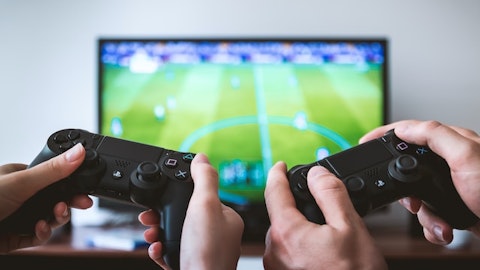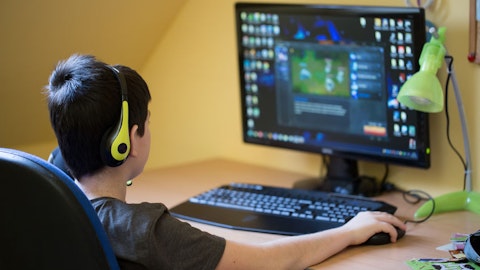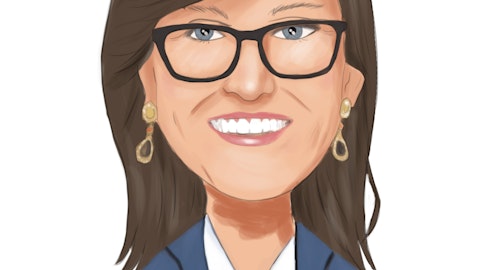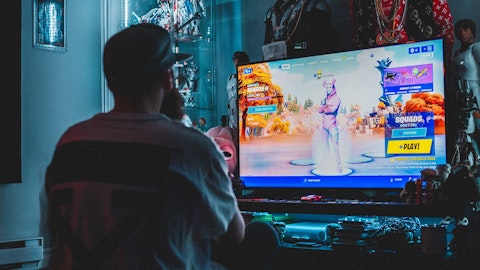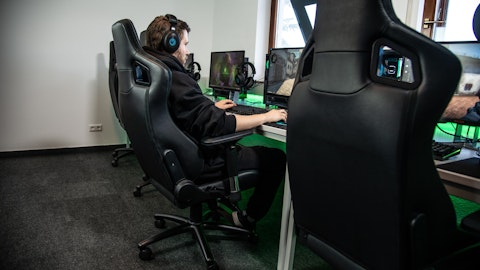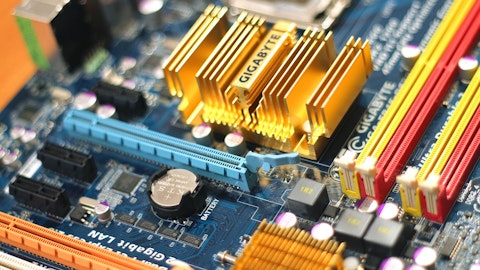So I think Starfield’s probably the one that’s had the most number of hours. Baldur’s Gate, I think, was the biggest surprise in terms of number of players that jumped in. And I think all of these things help with hardware. All the new games have got requirements that need more memory. So there’s a lot of push right now for 32 gigs of DRAM, which is helpful for us because the data we’ve seen from Steam, who collects what people’s configuration is that 80% of people have 16 gig or less. So we are in the cycle of people upgrading, and I think the other part of it is people building new machines using the latest graphics. So all these games help, but I wouldn’t say that there’s one in particular that’s outstanding that’s driven. It’s just that we’ve had a lot of games between Baldur’s Gate, Starfield, Cyberpunk, there’s a lot of new games that have come out that have been pretty high level.
Colin Sebastian: Got it. All right. Thank you.
Operator: [Operator Instructions] Our next question will come – a follow-up from Aaron Lee with Macquarie. You may now go ahead.
Aaron Lee: Hi. Just a quick follow-up. I wanted to touch on the survey you highlighted about the refresh cycle. In your experience, is there a difference in the refresh cycle between components and peripherals? Or do you find that people generally refreshing one kind of leads to refreshing the other?
Andy Paul: No. They’re not coupled. Typically, we’ve seen three to five years for systems. People have spent $2,000 on a gaming system. Anywhere from three to five is when they upgrade. For peripherals, it’s more like a three-year cycle and some being much faster. So we’ve seen, in some cases, especially at the lower end of the entry level of headsets, people tend to sit on them and break them. So those can be as low as 18 months. But three to four years for peripherals, three to five years for components is usually where we model it.
Aaron Lee: Got you. Thanks. Perfect.
Operator: Our next question will be a follow-up from George Wang with Barclays. You may now go ahead.
George Wang: Hi. Just to have a quick follow-up. Just in terms of the sort of new product categories into next year. And just curious, any more white space in terms of the peripherals? So obviously, you guys launched quite a bit of new products. Just curious kind of – kind of high level over the next couple of years, which sort of gap or kind of you guys can potentially feel if you were to launch new products kind of to compete with the competitors in terms of any additional white space you guys may potentially be targeting?
Andy Paul: Yes. I think we’ve talked about this before. The two areas that we’re looking at that will probably be the next products categories to launch is sim racing and mobile gaming.
Michael Potter: And I think you could see from the Envision controller that we just did from Scuf, mean when Corsair does something, we do something better than what the market is used to. A lot of people’s PC controllers are just coffee of a console controller, but we added a lot of extra functionality into ours that made it really a good controller for PC games. So that’s the type of stuff that we’re good at is that when we do come out with a product like that, we really hit what the market needs and add some innovation to it.
George Wang: Okay. Great. Sounds good. Thank you.
Operator: [Operator Instructions] It appears there are no further questions. This concludes our question-and-answer session. I would like to turn the conference back over to Andy Paul for any closing remarks.
Andy Paul: Well, thank you, everyone, for joining the call today and for continued support. If you have any follow-up questions, please contact our Investor Relations department, and we look forward to updating you next quarter. Thank you, and have a good evening.
Operator: The conference has now concluded. Thank you for attending today’s presentation. You may now disconnect.
Follow Corsair Gaming Inc. (NASDAQ:CRSR)
Follow Corsair Gaming Inc. (NASDAQ:CRSR)
Receive real-time insider trading and news alerts
